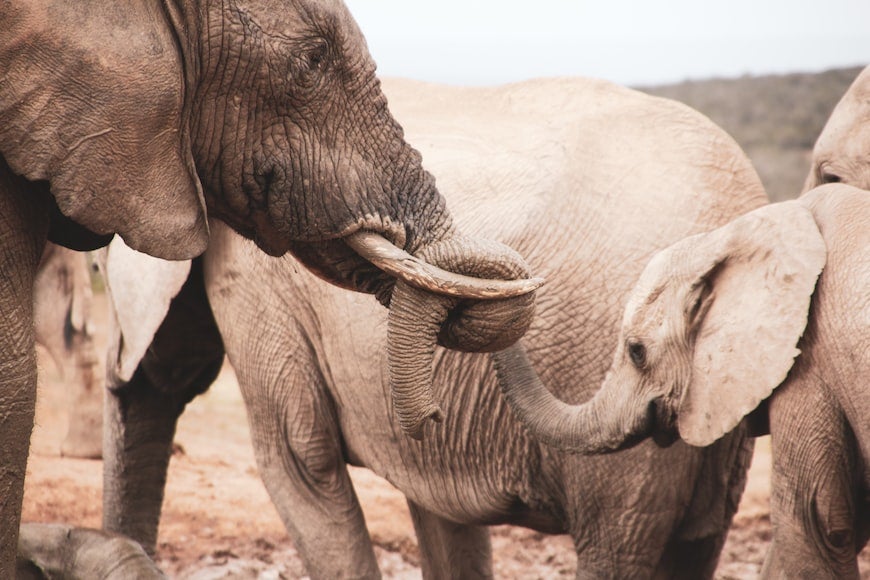Ivory trade regulator points to gaps in southern African states’ application to reopen ivory sales
Global body says Botswana, Namibia, South Africa and Zimbabwe have not answered key questions how elephants would be protected if trade reopened

By Farayi Machamire for Zim Morning Post
Southern African countries pushing to reopen the ivory trade have not provided any solution of how future trade in raw ivory would be conducted, regulated and enforced, if the proposal were adopted, the global body regulating the trade has said.
Botswana, Namibia, South Africa and Zimbabwe are seeking amendment to CITES regulations such that certain stocks of ivory are moved from an Appendix I trade regime to an Appendix II trade regime – albeit subject to some conditionality.
But CITES, the UN Convention on International Trade in Endangered Species of Flora and Fauna, remains unconvinced by the submissions the four elephant range states have made, and fear that lifting restrictions on ivory trade would open the floodgates to poaching.
A final decision on the proposal, and 51 other proposals made to CITES by other member states who are part of 184 signatory Parties, will be made in November at the Nineteenth Conference of the Parties meeting (CoP19) which is CITES’ ultimate decision-making forum.
Leading up to that convention, the CITES Secretariat has left a small window open for concerned parties and interested stakeholders to provide further submissions on any of the 52 proposals currently under debate.
The four states, on their part, have threatened to pull out of CITES, if their concerns are not upheld.
They regard CITES as an inhibitor and not an enabler of progress towards the continued protection of large African elephant populations, and that CITES decisions remove rather than create incentives for conservation.
Elephant populations of Botswana, Namibia, South Africa and Zimbabwe comprise around 256,000 elephants or 61.6% of all remaining elephants in Africa.
In its recently published assessment of the countries’ proposal, CITES noted the uneasy relationship but still held that not enough information and evidence had been provided for the proposal to have a fighting chance.
“The proposal is to remove some of the special measures currently in place concerning the trade in ivory…However, the supporting statement does not provide information on what special measures would replace these or what effective enforcement controls are in place associated with these measures,” CITES Secretariat said in their provisional assessment.
“The proponents do not discuss findings by the Elephant Trade Information System (ETIS) relating to the levels and trends in illegal trade in ivory in detail. It is acknowledged that the demand for ivory, particularly in Asia, has been linked to poaching in areas where law enforcement is neither strong nor effective,” CITES Secretariat continued.
“As mentioned above, the proponents do not specifically address precautionary safeguards concerning the trade in registered raw ivory but propose to retain the main restrictions in the annotation to the Appendix II listing adopted at CoP14.
“Considering the recent closure of domestic markets in Asia and elsewhere, it is not clear which country (or countries) might be a possible trading partner.
“It would be helpful to understand how any future trade in registered government-owned raw ivory would be conducted, regulated and enforced, if the proposal is adopted. This would allow the Conference of the Parties to determine whether the precautionary measures are adequate to address the anticipated risks to the species.”
The four countries insist that the sale of legally sourced, registered ivory to responsible markets could generate revenue to fund implementation of national elephant management plans and anti-poaching strategies, as well as supporting community-based initiatives to secure elephant habitat, dispersal areas and corridors.
The Secretariat provisionally concluded that it is unclear to the Secretariat whether the precautionary safeguards have been fully addressed.
“If adopted, the proposed amendments would have the effect of reducing the quantity of registered government-owned raw ivory of L. africana from the populations of Botswana, Namibia, South Africa and Zimbabwe deemed to be specimens of species of Appendix I. The potential risks of increased poaching or illegal trade in ivory associated with a legal trade in registered government-owned raw ivory stocks, or measures to address these risks, are not elaborated upon,” CITES said.
“The proponents propose to retain the main restrictions in the annotation to the Appendix-II listing adopted at CoP14, but it remains unclear how any future trade in registered government-owned raw ivory would be conducted, regulated and enforced, if the proposal were adopted.”
The provisional assessment will be followed in early October by the Secretariat’s final assessment of the proposals.
The final assessment will consider comments from Parties and other bodies, which are consulted as they have a particular interest or expertise in the subject of the proposal.
SADC states have presented similar proposals in the past and they have been rejected by the Conference of the Parties.
This article is reproduced here as part of the African Conservation Journalism Programme, funded in Angola, Botswana, Mozambique, and Zimbabwe by USAID’s VukaNow: Activity. Implemented by the international conservation organization Space for Giants, it aims to expand the reach of conservation and environmental journalism in Africa, and bring more African voices into the international conservation debate.
Read the original story here:

Join our commenting forum
Join thought-provoking conversations, follow other Independent readers and see their replies